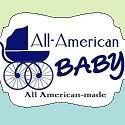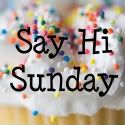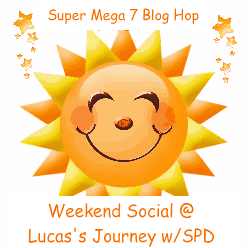The most important thing to keep in mind when purchasing toys for your child is their developmental stage, not just their age. Children develop at their own pace, and a child can have strengths in some areas and be weak in others. And of course every child is different, even within the same family! My own children are like night and day…my daughter was speaking in complete sentences (paragraphs even) by the time she was two, but just learned to jump last year. Yet my 19-month-old son, while I can barely understand the few words he does have, is already learning how to put simple puzzles together, and can climb almost as well as his 4-year-old sister. A good rule of thumb when purchasing toys is to choose toys that will actively engage the child, both physically and mentally, and can be used in a variety of ways. As a child’s interests, abilities and imagination grow, they will be able to use the toy in different ways. For example, a simple stacking toy can be used in a variety of ways: early on, the bright colors and smooth surfaces encourage reaching and grabbing, later it can be held and banged together to encourage coordination, then later can be used for motor skill practice as the child learns to place the rings on the cone, and eventually teaches ordering concepts as the child learns that there is a certain order for those rings.
 Even a simple soft animal or doll is an appropriate plaything for children of all ages. At first, baby is just content to watch, the colors and facial expression of the toy are fascinating to her. Later she will grab, pull on and mouth the toy (this is completely normal…babies are very oral and explore with their mouths!). Soon she is using it to crawl over or throw as she develops her gross motor skills. Eventually the soft toy becomes part of her imaginative play, as she pretends with it, and perhaps it has even become part of her emotional comforting system (thus a “lovie”).
Even a simple soft animal or doll is an appropriate plaything for children of all ages. At first, baby is just content to watch, the colors and facial expression of the toy are fascinating to her. Later she will grab, pull on and mouth the toy (this is completely normal…babies are very oral and explore with their mouths!). Soon she is using it to crawl over or throw as she develops her gross motor skills. Eventually the soft toy becomes part of her imaginative play, as she pretends with it, and perhaps it has even become part of her emotional comforting system (thus a “lovie”). Another example of a developmentally appropriate toy that can span the ages is a set of blocks (see my post on block play for more information). Blocks can be appropriate for a young baby, as he initially uses them for grabbing and banging (yes, all that banging is actually necessary for development!). Soon he is able to stack and knock down (even the knocking down part teaches skills like cause and effect), and later he will develop the skill to actually begin building more complex towers, and to use the block structures in his imaginative play.
The best toys for development won’t necessarily have blinking lights and sounds, sometimes these toys can over-stimulate the child and usually can only be used in one way. Instead, look for toys in which the child controls the play, and can continue to use as they develop. And also remember, you are your child’s first, most fascinating, and most important plaything!
More coming soon: Stages of development and appropriate toys for each stage

























No comments:
Post a Comment